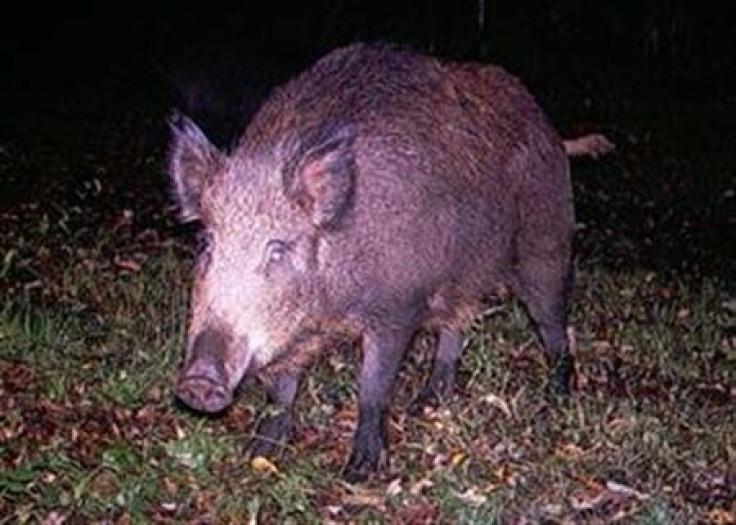Vicious Feral Pigs on Rampage in New York State

Feral pigs are killing livestock, chasing humans and causing billions of dollars in agricultural damage after a huge explosion in their population in the USA.
In 1990, there were fewer than two million wild pigs in 20 US states, mainly in the south, John J. Mayer, of the Savannah River National Laboratory told the New York Times.
Now the population has exploded to an estimated six million with sightings across 47 states and as far north as New York and Pennsylvania.
Most of the pigs were bred to be hunted in private game reserves and either escaped from captivity or while being illegally transported across state lines.
The pigs dig up lawns and fields, decimate wetland, kill livestock and spread disease.
In states including Florida they have been reported to roam suburban streets, and chase family pets.
Biologist Justin Gansowski told Reuters that the swine have attacked livestock, killed a Labrador retriever and chased people in New York state.
Many of the pigs that roam wild are Russian Wild Boar, which can weigh up to 300 kg (661lbs) and have sharp tusks.
"It's simple," said Patrick Rusz of the Michigan Wildlife Conservancy. "Russian boar - global track record of destruction, property damage, bankruptcy and spreading disease. Porky Pig on the farm - none."
The US Agricultural Department estimated in 2007 that they were responsible for approximately $1.5 billion agricultural damage, which is about $300 per pig and has requested extra federal funds to combat the problem.
The state of Michigan has passed a bill banning ownership of feral pig species, and legislators in Pennsylvania have attempted to do likewise.
But they have faced fierce opposition from owners of private hunting ranges who claim that a blanket ban would hugely damage their businesses.
Despite it being legal to shoot the pigs all year round in most states, it is not enough to halt the growth in the population.
"The conundrum is that you've got one of the world's hundred worst invasive animals, and at the same time you've got a highly desirable game species," Dr Mayer told the New York Times. "It's a real Jekyll and Hyde type situation with wild pigs."
© Copyright IBTimes 2024. All rights reserved.






